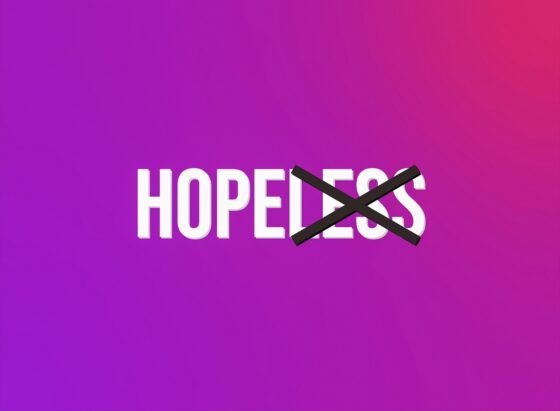Health & Hope: Navigating America’s Mental Well-being Crisis in the Digital Age. Mental Health & well-being is not merely the absence of illness; it is a fundamental component of overall health, enabling individuals to cope with life’s stresses, realize their potential, and contribute to their communities.
However, the United States is currently grappling with what many experts describe as a profound mental health crisis. This challenge is multi-faceted, impacting diverse demographics but raising particular alarm for its effects on adolescents and young adults. From persistent issues with access to mental healthcare and insurance parity to the pervasive influence of social isolation in an increasingly digital world, the complexities are immense. Yet, amidst these challenges, the rise of digital mental health solutions offers a beacon of hope, promising to revolutionize how support is delivered. This article delves into the core aspects of America’s mental health crisis, exploring its scope, systemic barriers, and innovative pathways toward a healthier future.
The Alarming State of Youth Mental Health
One of the most pressing concerns within the broader mental health crisis is the escalating rates of mental health disorders among adolescents and young adults. This demographic, often perceived as resilient, is facing unprecedented psychological pressures.
Rising Rates of Anxiety and Depression(Mental Health)
Data from organizations like the Mental Health America (MHA) consistently show a significant increase in the prevalence of anxiety and depression among young people. Factors contributing to this rise are complex and multifaceted, including:
- Academic Pressure: Intense competition for college admissions and future careers.
- Social Media Pressure: The constant comparison to curated online lives, cyberbullying, and the fear of missing out (FOMO).
- Global Instability: Exposure to news about climate change, political unrest, and economic uncertainty.
- Family Stress: Economic hardship, family conflict, or parental mental health issues.
These stressors can lead to persistent feelings of worry, sadness, hopelessness, and a diminished ability to engage in daily activities.
The Shadow of Substance Use Disorders
Alongside anxiety and depression, there’s a concerning link between mental health struggles and the rise of substance use disorders among youth. Many young people may turn to alcohol or drugs as a coping mechanism for untreated mental health conditions, creating a dangerous cycle.
- Self-Medication: Using substances to numb emotional pain, reduce anxiety, or escape depressive thoughts.
- Increased Risk: Substance use during adolescence can disrupt brain development and increase the likelihood of developing addiction and other mental health problems later in life.
- Opioid Crisis Impact: While often associated with adults, the opioid crisis has also impacted younger demographics, leading to tragic consequences.
Addressing co-occurring mental health and substance use disorders requires integrated treatment approaches that tackle both issues simultaneously.
Unique Pressures on Today’s Youth
Today’s youth navigate a world vastly different from previous generations. The constant connectivity, coupled with societal expectations and global anxieties, creates a unique set of pressures that can overwhelm developing minds. Understanding these specific stressors is crucial for developing targeted interventions and support systems.
Bridging the Gap: Challenges in Mental Healthcare Access
Despite the clear and growing need, accessing quality mental healthcare in the USA remains a significant hurdle for millions. Systemic issues contribute to this gap, exacerbating the crisis.
The Fight for Mental Health Parity
The concept of mental health parity dictates that insurance coverage for mental health and substance use disorder services should be no more restrictive than for medical and surgical care. While laws like the Mental Health Parity and Addiction Equity Act (MHPAEA) exist, enforcement remains a challenge.
- Unequal Coverage: Many insurance plans still impose higher co-pays, stricter limits on sessions, or narrower networks for mental health providers compared to physical health.
- Out-of-Pocket Costs: High deductibles and out-of-pocket expenses make therapy and psychiatric care unaffordable for many, even with insurance.
- Stigma: Despite progress, the stigma surrounding mental illness still deters individuals from seeking help, fearing judgment or professional repercussions.
Advocacy groups like the National Alliance on Mental Illness (NAMI) continue to push for stronger enforcement and broader understanding of parity laws.
Addressing Workforce Shortages
A critical barrier to access is the severe shortage of mental healthcare professionals across the country, particularly in rural and underserved areas.
- Geographic Disparities: Many counties lack even a single psychiatrist, leaving residents with limited or no local options for specialized care.
- Provider Burnout: Existing professionals often face overwhelming caseloads, contributing to burnout and further reducing the available workforce.
- Lack of Diversity: A lack of diversity among mental health providers can make it difficult for individuals from marginalized communities to find culturally competent care.
Addressing these shortages requires investment in training programs, incentives for practitioners to work in underserved areas, and policies that support the well-being of the mental health workforce.
Integrating Mental Health into Primary Care
A promising strategy to improve access is the integration of mental health services directly into primary care settings.
- Early Detection: Primary care physicians are often the first point of contact for individuals experiencing mental health symptoms, allowing for earlier screening and intervention.
- Reduced Stigma: Receiving mental health support in a familiar primary care setting can reduce the stigma associated with seeking specialized psychiatric care.
- Holistic Approach: This integration promotes a holistic view of health, acknowledging the interconnectedness of physical and mental well-being.
This model aims to make mental health support a routine part of healthcare, rather than a separate, often stigmatized, service.
The Silent Epidemic: Social Isolation and Loneliness
Beyond clinical diagnoses, a pervasive societal issue contributing to the mental health crisis is the rising tide of social isolation and loneliness, increasingly recognized as a public health concern.
Loneliness as a Public Health Issue
Studies by organizations like the CDC and the U.S. Surgeon General have highlighted loneliness not just as an emotional state, but as a significant risk factor for various health problems. It’s an “epidemic” that affects millions of Americans across all age groups.
Physical and Mental Repercussions
The impact of social isolation extends far beyond emotional discomfort:
- Increased Mortality Risk: Research suggests loneliness can be as detrimental to health as smoking 15 cigarettes a day.
- Physical Health: Linked to higher rates of cardiovascular disease, stroke, obesity, weakened immune function, and inflammation.
- Mental Health: A strong predictor of depression, anxiety, cognitive decline, and even an increased risk of dementia in older adults.
The lack of meaningful social connection deprives individuals of crucial emotional support, practical assistance, and a sense of belonging, all vital for resilience.
The Role of Digital Connection vs. Real-World Interaction
While digital platforms offer avenues for connection, they can also paradoxically contribute to loneliness if they replace genuine, in-person interactions. Curated online personas can foster a sense of inadequacy, and passive consumption of others’ lives can lead to feelings of isolation. The key lies in leveraging digital tools to *facilitate* real-world connection, rather than substituting it.
The Digital Frontier: Innovations in Mental Health Solutions
Amidst the challenges, technology is emerging as a powerful ally in the fight against the mental health crisis, offering scalable and accessible solutions.
Teletherapy: Expanding Reach and Convenience
The rapid expansion of teletherapy (online therapy via video, phone, or chat) has been a game-changer for mental healthcare access.
- Increased Accessibility: Breaks down geographical barriers, making therapy available to individuals in rural areas or those with mobility issues.
- Convenience and Flexibility: Allows for sessions from the comfort of one’s home, fitting into busy schedules and reducing time spent commuting.
- Reduced Stigma: For some, the anonymity and privacy of online sessions can make it easier to seek help without fear of judgment.
Teletherapy has proven to be as effective as in-person therapy for many conditions, offering a vital lifeline for those who previously couldn’t access care.
AI-Powered Chatbots and Support Tools
Artificial intelligence is increasingly being deployed to provide immediate, scalable mental health support.
- 24/7 Availability: Chatbots can offer instant support and coping strategies around the clock, filling gaps when human therapists are unavailable.
- Triage and Information: AI tools can help users identify potential mental health concerns, provide psychoeducation, and guide them to appropriate resources or professional help.
- Anonymity: For individuals hesitant to speak with a human, chatbots offer a low-pressure, anonymous entry point to explore their feelings.
While not a replacement for human therapy, these tools serve as valuable complements, offering initial support and guidance.
Mobile Apps for Mindfulness and Mood Tracking
The proliferation of mental wellness apps has put tools for self-care and mood management directly into people’s pockets.
- Mindfulness and Meditation: Apps like Headspace and Calm offer guided meditations and breathing exercises to reduce stress and improve focus.
- Mood Tracking and Journaling: Many apps allow users to log their moods, identify triggers, and track progress over time, providing valuable insights for self-management and therapy.
- Cognitive Behavioral Therapy (CBT) Tools: Some apps offer exercises based on CBT principles, helping users challenge negative thought patterns and develop healthier coping mechanisms.
The Promise and Pitfalls of Digital Solutions
While digital mental health solutions offer immense promise for expanding access and empowering individuals, it’s crucial to acknowledge their limitations. Issues like data privacy, the need for human oversight, and ensuring equitable access to technology remain important considerations. The most effective approach often involves a blended model, combining digital tools with traditional human-centered care.
Moving Forward: Strategies for a Healthier Future
Addressing America’s mental health crisis requires a multi-pronged approach involving policy, community, and individual action.
Advocating for Policy Change
Continued advocacy for robust mental health parity laws, increased funding for mental healthcare infrastructure, and policies that address social determinants of health (like affordable housing and food security) are essential. Policy makers must prioritize mental well-being as a core public health issue.
Fostering Community and Connection
Combating loneliness requires intentional efforts to build and strengthen community bonds. This includes supporting local initiatives, encouraging participation in groups, and fostering environments that promote genuine human interaction over digital isolation. For more insights on building strong connections, visit Love & Health Future.
Empowering Individuals with Digital Literacy
Educating individuals, especially youth, on healthy digital habits, critical media literacy, and recognizing the signs of online manipulation or unhealthy social media use is vital. This empowers them to navigate the digital world more safely and mindfully.
FAQs about Mental Health & Well-being Crisis
Q: What are the early signs of mental health issues in youth?
A: Changes in mood (persistent sadness, irritability), withdrawal from friends/activities, changes in sleep or appetite, difficulty concentrating, increased substance use, and expressions of hopelessness or self-harm are all potential signs. Early intervention is key.
Q: How can I find affordable mental healthcare?
A: Explore community mental health centers, university training clinics (which often offer lower rates), therapists who offer sliding scale fees, and online therapy platforms that may have more competitive pricing. Check if your employer offers an Employee Assistance Program (EAP). Resources like Psychology Today can help you find therapists in your area.
Q: Is teletherapy as effective as in-person therapy?
A: For many conditions, research suggests teletherapy can be just as effective as in-person therapy. Its effectiveness can depend on the individual’s needs, the specific condition being treated, and the quality of the therapeutic relationship. It offers significant benefits in terms of accessibility and convenience.
Q: What can I do to combat loneliness?
A: Actively seek out social connections by joining clubs or groups, volunteering, reaching out to friends and family, and engaging in community activities. Prioritize in-person interactions over passive online scrolling. Be open to new friendships and nurture existing ones.
Q: How can I support a loved one struggling with mental health?
A: Listen without judgment, offer empathy, encourage them to seek professional help, and offer practical support (e.g., helping them find a therapist). Educate yourself about their condition. Remember, you can’t “fix” them, but your support can be invaluable. For more resources on supporting loved ones, visit Love & Health Future.
Conclusion
America’s mental health and well-being crisis is a formidable challenge, deeply intertwined with societal shifts and the pervasive influence of the digital age. From the alarming rise in youth mental health concerns to persistent barriers in accessing care and the silent epidemic of loneliness, the need for comprehensive solutions is urgent. Yet, within this crisis lies immense opportunity. By championing mental health parity, fostering robust community connections, and strategically leveraging digital innovations, we can build a future where mental well-being is prioritized, accessible, and destigmatized for all. The path forward requires collective action, empathy, and a sustained commitment to nurturing the psychological health of every individual, ensuring that hope and healing are within reach.
To ensure this article is easily shareable and trackable, consider using a short URL service for its final published link. For example, a shortened URL like `loveandhealthfuture.com/mental-health-crisis` could be an effective way to promote this valuable content. By working together, we can transform the landscape of mental health in the USA, fostering a society where well-being is truly a cornerstone of life.




